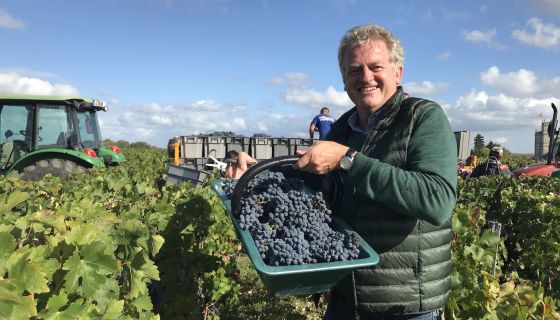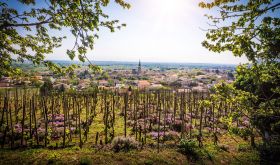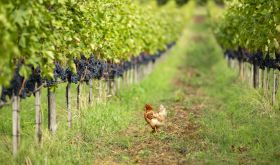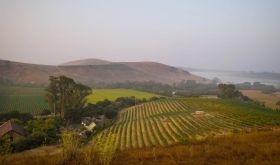Which grape variety is the world’s most widely grown? Which have fallen most rapidly out of favour? Which countries rely most heavily on international varieties, those familiar to wine drinkers all over the world, rather their own local indigenous grapes? A stupendously comprehensive compendium of wine-grape statistics*, just published by Professor Kym Anderson and Dr Signe Nelgen of Adelaide University, answers these questions and very many more.
The most recent year for which they can find comparable stats for all wine-producing countries is 2016, which means that everything is a tiny bit out of date. But their comparisons with 1990 and 2000 reveal fascinating overall trends and show us just how rapidly the world’s vineyards have been evolving. For a start there are fewer of them.
Between 2000 and 2016 the total area of the globe planted with grapevines contracted by 8%, chiefly because the big wine drinkers of old, the French and Spaniards in particular, are drinking so very much less. In the same period Americans, Chileans and New Zealanders all planted masses of new vineyards but failed to make up the difference. Interestingly, the US (which really means California) and Australia, rank even higher as wine producers than as vine growers – simply because their average yields are so high.
Between 2000 and 2016 the biggest percentage increases in vineyard area were all in cooler countries: China, New Zealand (where vineyard area quadrupled between 2000 and 2016), the UK where it doubled, and Canada. Climate change is certainly having an effect on the shape of the world wine map. According to Anderson and Nelgen’s analysis, in 2000 51% of the world’s vineyards were in hot climates whereas by 2016 this had fallen to 44% – chiefly because most of the vine-pull schemes, such as that initiated by the EU in 2008, were focused on the hottest regions.
In 1990 and 2000 the grape that occupied the greatest vineyard area in the world was the little-known brandy grape Airén that used to dominate the vast, arid plains of La Mancha. By 2016 it had fallen to fourth most planted variety and Cabernet Sauvignon had taken its place as the world’s most popular wine grape, planted on nearly 7% of the world’s vineyard area, up from 2% in 1990. I’m quite surprised by this, as it is not actually that easy to ripen in cooler climes – and has been going through a bit of a dip in popularity in some important markets. The Australians have turned against Cabernet in favour of Shiraz and exotica. Argentine growers shunned it in favour of Malbec. Red bordeaux – the archetypal Cabernet Sauvignon-based wine – has been going through an identity crisis and can be quite difficult to sell. And, although I haven’t measured this, I’m pretty sure the proportion of Cabernet Sauvignons that producers and importers choose to show us faddy wine writers has plummeted in recent years.
What this apparent contradiction highlights is what a long-term crop vines are. They are expected to stay in the ground for a good 30 years, so the choice of what to plant may have been made by an earlier generation in a very different commercial context.
The second most planted variety after Cabernet Sauvignon in 2016 was its blending partner Merlot but it’s not nearly as popular as it was in 1990 when it was more widely planted than Cabernet. The Merlot-phobic film Sideways has much to answer for.
The variety that saw the most spectacular increase in its total area is Tempranillo, the variety that now dominates Spanish vineyards. It may not be common outside the Iberian peninsula but Spanish growers planted it to such an extent, not least to replace Airén, that Tempranillo was the world’s third most planted grape variety in 2016, relegating Airén to fourth.
Chardonnay was almost as widely grown as Airén by 2016, and is, perhaps not surprisingly, the world’s favourite international white-wine grape, having tripled its total area since 1990 – not least because of its popularity as an ingredient in sparkling wines.
Sixth most planted was Syrah/Shiraz, thanks to Australian enthusiasm for it but also increased plantings in the south of France and, to a lesser extent, on the west coast of the US. Its traditional blending partner, on the other hand, the variety known as Garnacha Tinta in its native Spain and Grenache in France, has lost considerable ground since 1990 when it was the world’s second most planted variety after Airén. In 2016 it occupied seventh position. Anderson excludes it from his small group of ‘premium’ (high-quality) grape varieties in this latest report, but I would argue that it is now experiencing a re-evaluation by growers and quality-conscious consumers and is on the verge of being considered fashionable thanks to some great examples not just from the southern Rhône but also from Spain, South Africa and Australia.
Eighth and tenth most popular grapes in 2016, Sauvignon Blanc and Pinot Noir, both saw dramatic increases in popularity between 1990 and 2016, not least thanks to enthusiastic new plantings in New Zealand and the US respectively. Trebbiano Toscano, known as Ugni Blanc in France and once widely grown there for cognac, was ninth most planted wine grape of either colour, although its wines certainly wouldn’t qualify as premium.
Apparently red-wine grapes are even more popular outside Europe than with Europeans, who (slightly) favoured white-wine grapes in 2000. By 2016 the proportion of red-wine grapes planted had risen to 65% outside Europe and to 53% in Europe – though quite a few of those European red-wine grapes are now turned into rosé. China is the country with the highest proportion of red-wine grapes, 86%, while New Zealand has the lowest, 22%, thanks to the world’s insatiable thirst for New Zealand Sauvignon Blanc.
Anderson’s main point is that the internationally famous varieties have become increasingly dominant. Countries with the greatest reliance on them are France (where most of them come from, after all), the US, Chile and Australia. Those with the highest proportion of indigenous rather than international varieties are, in declining order – 100% down to 66% – Cyprus, Georgia, Spain, Greece, Croatia, Portugal and Italy (although Italy is the only one whose proportion of indigenous varieties waned quite substantially between 2000 and 2016 when many growers were still besotted by French glamour). France, incidentally, counts as having only just over 60% of her own grape varieties because so many of the varieties grown there were originally Spanish.
The countries with the narrowest range of different varieties were, in descending order, Cyprus, Croatia, Armenia and Sauvignon-Blanc-besotted New Zealand. Those with the richest mix were Romania then Italy, Hungary and Portugal. Countries that became much less varietally diverse between 2000 and 2016 were Cyprus, Croatia, Armenia, New Zealand, UK, Portugal, Slovenia and then Hungary. Those that became more varietally diverse in the same period were Switzerland (our Swiss co-author of Wine Grapes José Vouillamoz will be delighted), Austria, Moldova and France (slightly).
I would be surprised if, next time Professor Anderson undertakes this herculean task, he did not see an increase in the proportion and number of indigenous varieties. If Tesco can include the obscure Marche white-wine grape Passerina (£7) in its collection of The Finest …
*Database at www.adelaide.edu.au/wine-econ/databases/winegrapes/. Ebook at www.adelaide.edu.au/press/titles/winegrapes
Some favourite examples of the top ten varieties, listed in descending order
These are some exceptional examples tasted recently.
Cabernet Sauvignon
Henschke, Cyril Henschke Cabernet Sauvignon 2015 Eden Valley
£100 Honest Grapes and others
Merlot
Ch L’Église Clinet 1995 Pomerol
£290 Hedonism
Tempranillo
La Rioja Alta, Viña Ardanza Reserva Selección Especial 2010 Rioja
£23.50 The Wine Society and many others
Airén
Verum, Las Tinadas 2019 or 2018 Vino de la Tierra de Castilla
From €10 in Spain and Belgium
Chardonnay
Kumeu River, Estate Chardonnay 2019 New Zealand
£22.99–£24.90 DBM Wines, Oxford Wine Co, Four Walls Wine and widely available at £150 per case of 12 in bond
Syrah/Shiraz
Mullineux, Schist Syrah 2017 Swartland
£74.40 Berry Bros & Rudd
Garnacha Tinta/Grenache
David & Nadia Grenache (any vintage) Swartland
£120 per case of 6 in bond (2018) Justerini & Brooks
Sauvignon Blanc
Oliver Zeter, Fumé Sauvignon Blanc 2018 Pfalz
£23 Laithwaites and Averys
Trebbiano Toscano/Ugni Blanc
Tenuta di Ghizzano, Il Ghizzano 2019 Costa Toscana (ok, it’s a blend …)
£17.01 Winebuyers
Pinot Noir
Au Bon Climat, La Bauge au Dessus Pinot Noir 2016 Santa Maria Valley
£40.95 Noel Young Wines and others
International stockists via Wine-Searcher.com.













